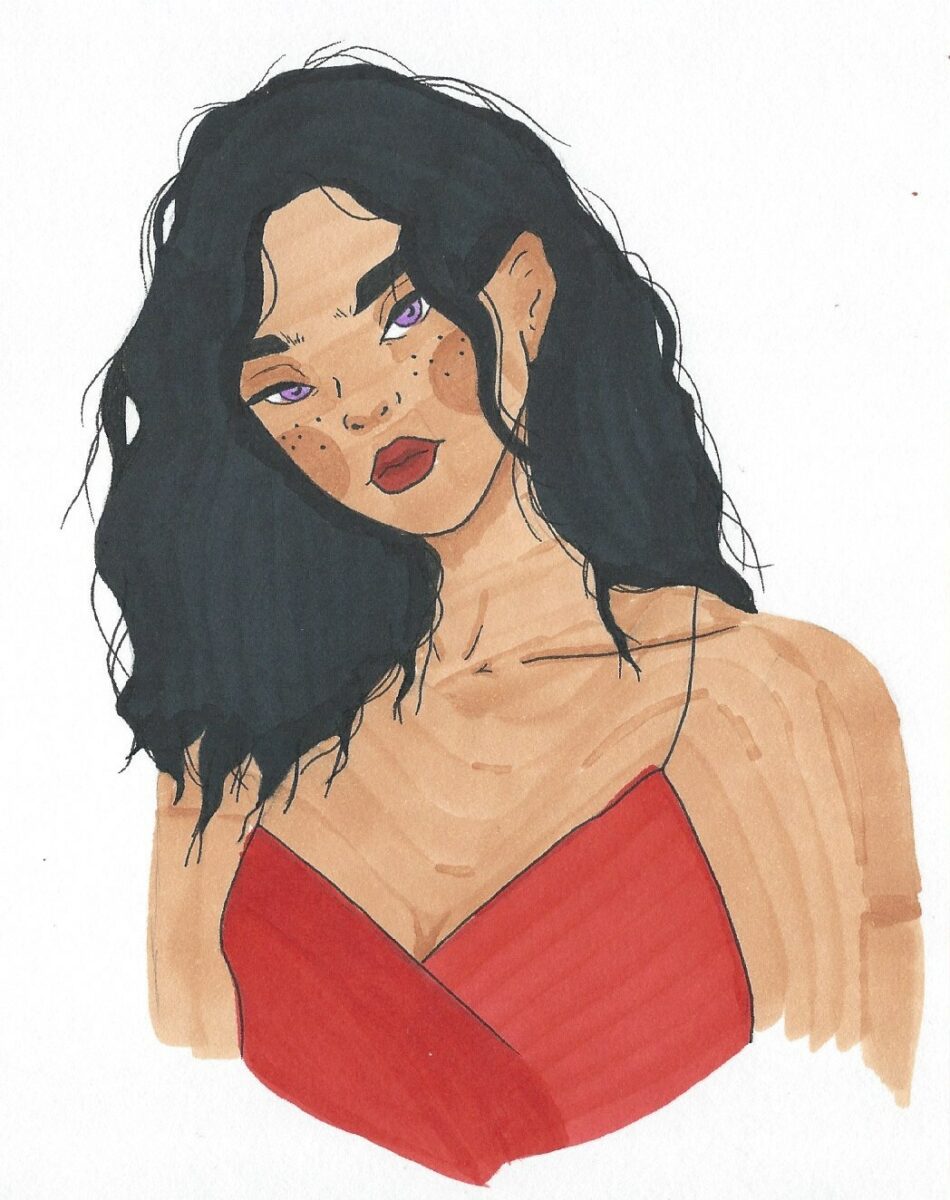Since childhood, I have wondered if I am beautiful. I watched white Disney princesses with thick blonde hair being rescued by handsome princes. With my tan skin, slanted brown eyes and black hair – would Prince Charming stay to rescue me, or would he not bother – my non-whiteness marking me as not pretty enough to save? I become acutely aware that I am other to whiteness and that the male gaze skids over my body differently compared to my white friends. I learn words like orientalism and concepts such as yellow fever. I do not really understand what they mean until an old white man compliments me on my ‘exotic beauty’ as I serve him at work.
There I am: thirteen years old, earning minimum wage at the Manuka McDonalds, a strong Aussie accent, and yet somehow, apparently, exotic. The concepts familiarise them to me as I am told that I am pretty for an Asian. I quickly learn to associate my beauty with my race – beauty & race – race & beauty. Even so, without completely understanding why still, I am grateful in a twisted way that I am seen as beautiful. Colonialism, the patriarchy – the dominance of the white male as the arbiter of all that is beautiful and ugly – I have yet to escape their clutches. In the end, I am grateful to be recognised in a sea of whiteness, blissfully, naively, ignoring the undertones of othering and stereotyping that accompanies this mark of recognition.
But things become complicated after my lupus diagnosis. You see, it all starts with alopecia – severe hair loss where strand by black strand, my hair fell out in clumps, leaving the milky white (the only whiteness I possess) of my scalp exposed. This was the first step. A gauntness follows, caused by feverish nights and loss of appetite. Peeled lips and cracked skin. I am too tired to reach for my glass of water, let alone apply some Lip Smackers to my lips. Beauty has fled the scene. I feel like a caricature of illness, all balding head, aching joints and shadowed eyes.
A month after my hospitalisation, I’m browsing in a bookstore. An old high school teacher that I admire stops and asks me how I am. It is a complete coincidence, one that pleases me. I cannot help but spill it all out – the lupus, the fevers, the hospitalisation. I paint a pretty picture of the last few months, largely spent lying horizontally. Illness is my perpetual bed partner. The teacher is reassuring, sympathetic – all that one could have hoped for as the audience of my pitiful act. She tells me that while I may not be well, at least I look well, and that in itself is something to be grateful for. She reminds me in that gentle, wise tone, that beauty is ever so fleeting, especially for those who are chronically ill. She looks over me and praises, ‘at least you still have your beauty’. I am soothed from the compliment. Like warm milk, it nurtures a battered sense of self.
Beauty and race now become entangled with health and illness. The truth of the question – am I beautiful? – becomes even more difficult to answer. Perhaps this is because I always thought beauty to be a signal of health, vitality and youth. With my aching joints, arthritis and rheumatism, I am not healthy. The truth of the matter is, with my health gone, I no longer feel beautiful.
I remember loosely Anne Boyer – an American writer who wrote about her cancer journey in her book The Undying, that one of the things women grapple with is the loss of their beauty after illness. I read those words in my hospital bed, cementing to me how fleeting my grasp, however warped and uneducated – on beauty was. I wish to look at beauty now as a sign of strength, beauty as survivorship, of fledgling good health. Then I look at my hands in the shower, holding another clump of black hair. It is difficult to reconcile the strands with beauty. Difficult to hyphenate beauty and illness. I think to myself, you cannot be young, pretty and ill.
Such a defeatist attitude my brain tells me!
My brain, alongside my body, are tired from navigating the politics of prettiness. There is no end to this Venn diagram – no truth to answer the question of who is beautiful and who is not. Do race and illness make you less beautiful? – I do not know – a truth that remains unanswered within the confines of this white, ableist and patriarchal society.
But perhaps a greater truth of beauty is revealing itself. One that matters more than the one that is unanswerable. That beauty – my own beauty – was indeed always in the eye of the beholder. That power, to be seen as beautiful or not, always belonged to someone or something else; the male gaze, an inhibited society, other women and now, illness.
I think back to my old high school teacher. You still have your beauty. If I remove the pronoun, it just becomes beauty. Abstract. Not my truth. Not my anything.
I relinquish any hold I used to have over it.
The Venn diagram is no more.
Think your name would look good in print? Woroni is always open for submissions. Email write@woroni.com.au with a pitch or draft. You can find more info on submitting here.
We acknowledge the Ngunnawal and Ngambri people, who are the Traditional Custodians of the land on which Woroni, Woroni Radio and Woroni TV are created, edited, published, printed and distributed. We pay our respects to Elders past and present. We acknowledge that the name Woroni was taken from the Wadi Wadi Nation without permission, and we are striving to do better for future reconciliation.
